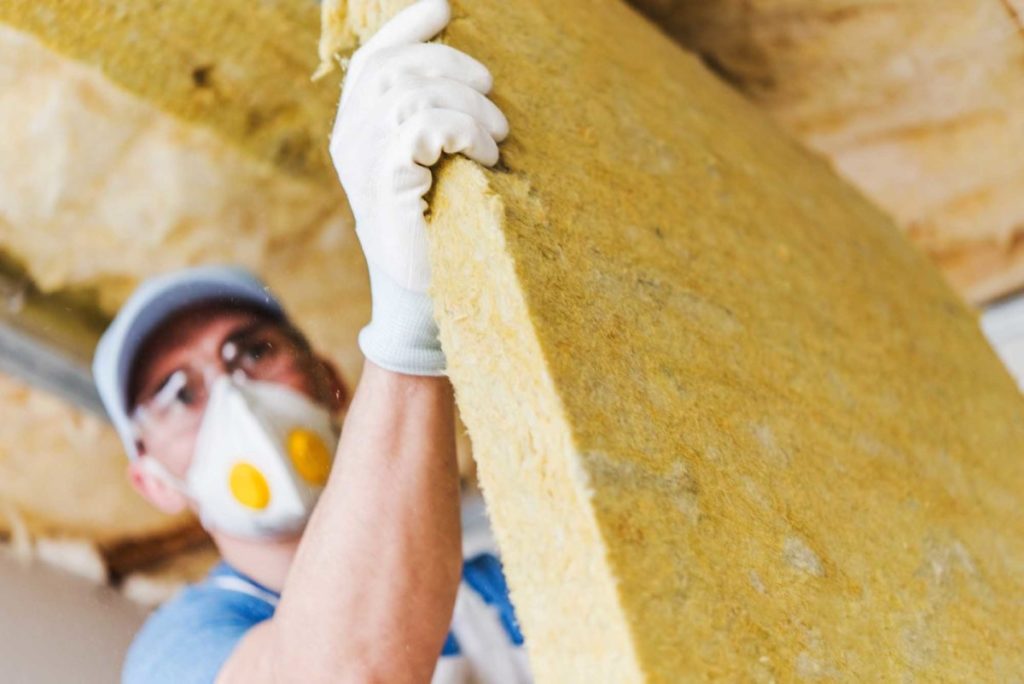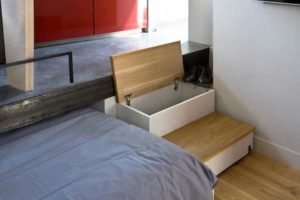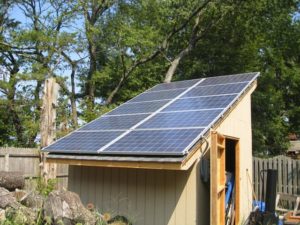Building an off-grid tiny home comes with its own set of unique challenges, particularly when it comes to maintaining a comfortable and efficient living space.
One important aspect to consider is proper insulation – not only does it help regulate the internal temperature, but it also plays a significant role in reducing energy consumption and saving you money on your power bills.
In this ultimate guide, we’ll delve into the world of off-grid tiny home insulation and provide actionable tips and techniques to ensure that your miniature abode is warm in winter and cool in summer, all while maximizing comfort and efficiency.
Choose the Right Insulation Materials
Consider the climate and location of your tiny home when selecting insulation materials. For example, if you live in a cold climate, you may want to choose materials with high thermal resistance, such as fiberglass or cellulose.
When selecting insulation materials, it’s essential to consider the climate and location of your tiny home.
If you live in a cold climate, you’ll want to choose materials with high thermal resistance, such as fiberglass or cellulose.
These materials are designed to keep your home warm and cozy, even in freezing temperatures.
Fiberglass insulation, for instance, is a popular choice for cold climates because it has a high R-value, which means it provides excellent thermal resistance.
This type of insulation is made from spun glass fibers that are blown into walls, floors, and ceilings, providing a snug, thermal barrier against the cold outside air.
Fiberglass insulation is relatively inexpensive, making it an affordable option for tiny homeowners on a budget.
Another excellent choice for cold climates is cellulose insulation.
This type of insulation is made from recycled paper products, such as newspaper and cardboard, that are treated with borates for fire resistance.
Cellulose insulation has a high R-value and is eco-friendly, making it a great choice for tiny homeowners who prioritize sustainability.
Ultimately, choosing the right insulation materials for your tiny home will depend on your specific climate and location.
However, with a little research and consideration, you can find the perfect insulation solutions to keep your home comfortable and energy-efficient all year round.
Optimize Insulation Location
Insulate the attic, walls, and floors to maintain comfortable temperatures throughout the year. Proper insulation location can save energy and reduce heating and cooling costs.
To maximize energy efficiency and comfort, it’s important to optimize the location of insulation in your home.
Insulating the attic, walls, and floors can help maintain consistent temperatures throughout the year, regardless of the outside weather.
Proper insulation location can also help reduce heating and cooling costs by preventing heat from escaping in the winter and heat from entering in the summer.
For example, insulating the attic can help keep warm air from escaping during the winter, while insulating the walls and floors can help keep cool air from entering during the summer.
Ensuring that insulation is properly sealed and vented can help prevent moisture buildup, which can lead to mold growth and other issues.
By optimizing insulation location, homeowners can enjoy year-round comfort and savings on their energy bills.
Add a Vapor Barrier
Install a vapor barrier between the interior and exterior walls to prevent moisture from seeping into the insulation and causing mold or rot.
Installing a vapor barrier is a important step in the insulation process, as it prevents moisture from seeping into the insulation and causing mold or rot.
The vapor barrier acts as a barrier between the interior and exterior walls, protecting the insulation from any moisture that may be present on the exterior of the walls.
This is particularly important in humid climates or in areas with high levels of precipitation, as moisture can easily seep into the walls and cause damage.
To ensure the effectiveness of the vapor barrier, it is important to choose a high-quality product that is designed specifically for this purpose.
Look for a vapor barrier that is made from durable materials, such as plastic or foil, and is designed to withstand the rigors of the elements.
Be sure to install the vapor barrier in a way that ensures it is airtight and watertight, to prevent any moisture from seeping in.
Once the vapor barrier is installed, it is important to properly seal any gaps or cracks in the walls to prevent any moisture from entering.
This can be done using a variety of materials, such as caulk or spray foam, and should be done in a way that ensures a continuous seal.
Be sure to regularly inspect the vapor barrier and repair any tears or damage to ensure its continued effectiveness.
By taking these steps, you can help protect your insulation from moisture and ensure that your home remains dry and comfortable.
Insulate the Foundation
Insulate the foundation of your tiny home to prevent heat loss and cold air from entering. You can use materials like foam board or spray foam insulation.
Insulating the foundation of your tiny home is a important step in preventing heat loss and cold air from entering.
Foam board or spray foam insulation are excellent options for this purpose.
These materials are lightweight, easy to install, and offer excellent R-values, ensuring that your home remains warm and cozy during the winter months and cool during the summer months.
By insulating the foundation, you’ll prevent heat from escaping through the ground, which can account for a significant portion of heat loss in tiny homes.
You’ll prevent cold air from entering through the foundation, which can help keep your home comfortable and reduce the need for heating and cooling.
To insulate the foundation, you can use foam board insulation, which is available in various thicknesses and can be cut to fit the shape of your home’s foundation.
You can also use spray foam insulation, which is a more expensive option but offers superior R-values and can be more easily applied to complex shapes.
To ensure proper installation, it’s essential to follow the manufacturer’s instructions for each material.
It’s essential to seal all gaps and cracks around the foundation to prevent air and moisture from entering.
With proper installation and maintenance, insulating the foundation of your tiny home can help improve its energy efficiency, reduce your carbon footprint, and save you money on energy bills.
Seal All Openings
Seal all openings, including doors and windows, to prevent air leaks and heat loss. Use caulk or weatherstripping to seal any gaps around movable parts.
Seal All Openings: One of the most effective ways to save energy and money this winter is to seal all openings, including doors and windows, to prevent air leaks and heat loss.
Caulk and weatherstripping can be used to seal any gaps around movable parts, ensuring that warm air stays inside and cold air stays outside.
By taking this simple step, homeowners can help prevent heating loss and reduce their energy bills.
Sealing openings can help reduce dust and pollen in the home, creating a cleaner and healthier environment.
To get started, check the windows and doors for any gaps or cracks, and use caulk or weatherstripping to seal them.
For doors, consider using a door sweep or a rubber doorstop to block drafts.
By taking a few minutes to seal all openings, homeowners can enjoy a warmer, more energy-efficient home this winter.
Use Radiant Barrier Paint
Apply radiant barrier paint to your roof to reflect heat away from your tiny home during the summer months. This can help reduce cooling costs and keep your home comfortable.
Radiant barrier paint is a simple and cost-effective solution for reducing heat gain in your tiny home during the summer months.
By applying this specialized paint to your roof, you can reflect the intense heat of the sun away from your home, resulting in a cooler and more comfortable living space.
Unlike traditional paints, radiant barrier paint is designed with a reflective surface that reflects up to 90% of the sun’s rays, keeping your home shaded and reducing the need for air conditioning.
Not only does this help lower your cooling costs, but it also helps reduce the strain on your tiny home’s cooling system, extending its lifespan and overall efficiency.
Plus, radiant barrier paint is easy to apply and can be used on both new and existing roofs, making it an accessible solution for any tiny homeowner looking to beat the heat this summer.
Invest in High-Performance Windows
Install high-performance windows to minimize heat loss and gain. Look for windows with low-E glass and multiple panes for maximum energy efficiency.
When it comes to improving energy efficiency and comfort in your home, investing in high-performance windows is a game-changer.
Traditional windows can let precious heat escape during the winter months, causing your heating bill to skyrocket.
By installing high-performance windows with low-E glass and multiple panes, you can minimize heat loss and gain.
Low-E glass is a special type of glass that reflects heat back into your home, rather than allowing it to escape.
Multiple panes provide an extra layer of insulation, ensuring that your home stays warm and cozy throughout the winter.
And the best part?
These windows can also help keep your home cool and comfortable during the summer months by blocking out harmful UV rays and reducing heat gain.
With high-performance windows, you’ll not only save money on your energy bills, but you’ll also enjoy a more comfortable living space all year round.
Add a Heat Recovery Ventilator
Install a heat recovery ventilator (HRV) to recover heat from exhaust air and use it to warm incoming fresh air. This can help improve energy efficiency and indoor air quality.
Installing a heat recovery ventilator (HRV) is an excellent way to improve energy efficiency and indoor air quality in your home.
An HRV is a device that recovers heat from exhaust air and uses it to warm incoming fresh air.
This process not only saves energy but also helps to maintain a more consistent temperature throughout your home.
By recovering heat that would otherwise be lost through exhaust air, an HRV can reduce the amount of energy needed to heat your home.
This can lead to significant cost savings on your energy bills, especially in colder climates.
An HRV can help to improve indoor air quality by bringing in fresh air and removing stale air, which can help to reduce the prevalence of respiratory issues and other health problems.
Overall, installing an HRV is a simple yet effective way to improve the energy efficiency and overall health of your home.
Want More? Dive Deeper Here!
Hey there! If you’re the type who loves going down the rabbit hole of information (like we do), you’re in the right spot. We’ve pulled together some cool reads and resources that dive a bit deeper into the stuff we chat about on our site. Whether you’re just killing time or super into the topic, these picks might just be what you’re looking for. Happy reading!






